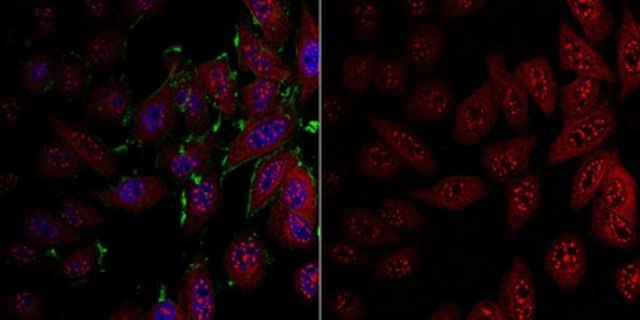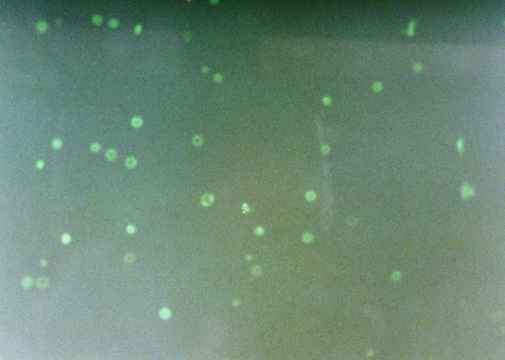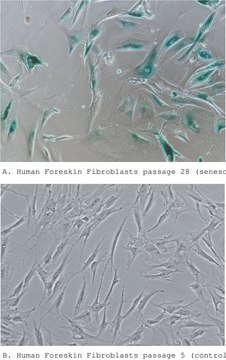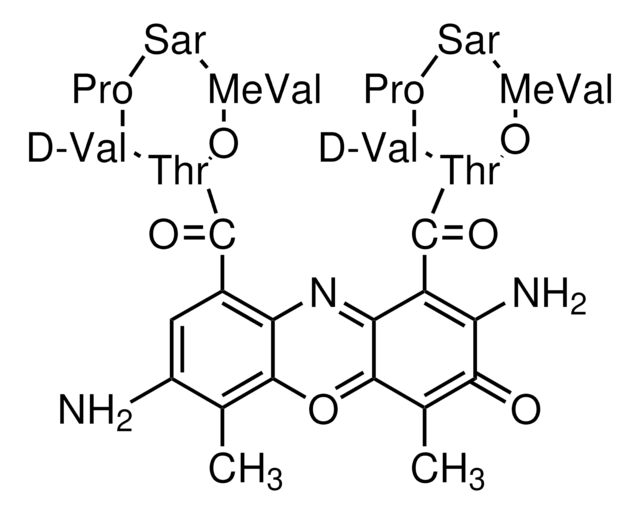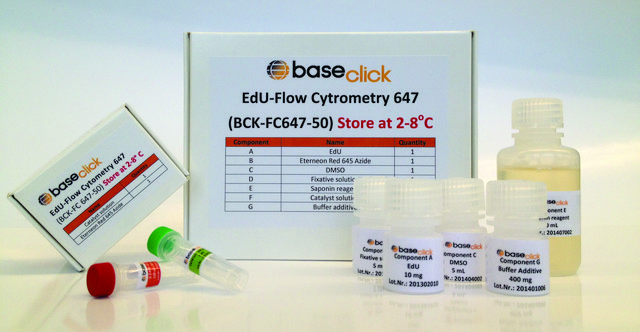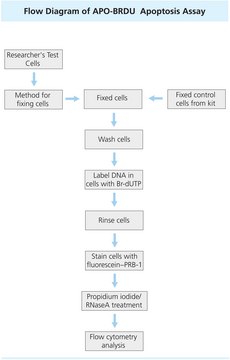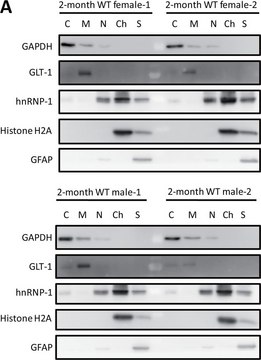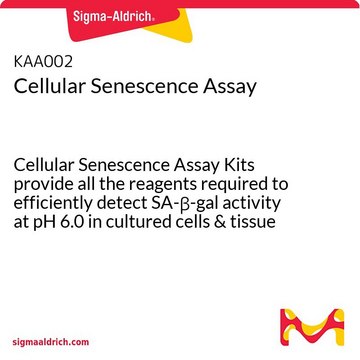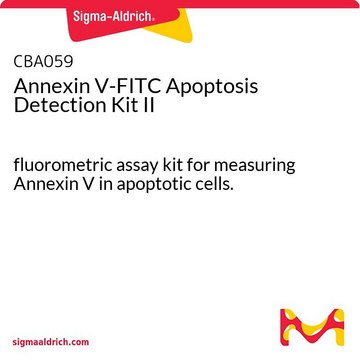MAK344
Cell Cycle Analysis Kit
sufficient for 100 assays
Synonym(s):
Cell Cycle Staining Kit
Sign Into View Organizational & Contract Pricing
All Photos(3)
About This Item
UNSPSC Code:
12161503
NACRES:
NA.84
Recommended Products
usage
sufficient for 100 assays
detection method
fluorometric
relevant disease(s)
cancer
storage temp.
−20°C
General description
Cell cycle is a ubiquitous, complex sequence of events leading to growth and proliferation of cells. Cell cycle progression is tightly regulated due to its involvement in development, DNA damage and repair, etc. Anomalies in cell cycle progression can lead to tissue hyperplasia and diseases such as cancer. Cell cycle can be subdivided into interphase (G0/G1, S and G2) and mitotic (M) phase (prophase, metaphase, anaphase and telophase).
Application
- HMGB2 Upregulation Promotes the Progression of Hepatocellular Carcinoma Cells through the Activation of ZEB1/vimentin Axis.: This research employed cell cycle analysis to elucidate the role of HMGB2 in hepatocellular carcinoma. The findings highlighted how HMGB2 influences cell cycle dynamics and metastatic properties, emphasizing the kit′s application in cancer research (Lu et al., 2023).
- Exploring the Anti-Glioma Mechanism of the Active Components of Cortex Periplocae Based on Network Pharmacology and iTRAQ Proteomics In Vitro.: This study integrated cell cycle analysis with network pharmacology and iTRAQ proteomics to uncover the anti-glioma properties of Cortex Periplocae components. It demonstrated the comprehensive application of the kit in neuro-oncology research (Huan et al., 2023).
- ERH Gene Knockdown Inhibits the Proliferation and Migration of ARPE-19 Cells through MCM Complex and EMT Process.: Using a cell cycle analysis kit, this research identified the impact of ERH gene knockdown on cell proliferation and migration in ARPE-19 cells. The study underscored the kit′s role in gene function studies and cell biology (Li et al., 2023).
- Quantitative Proteomics Reveals Effects of Environmental Radiofrequency Electromagnetic Fields on Embryonic Neural Stem Cells.: This investigation used cell cycle analysis to study the effects of radiofrequency electromagnetic fields on embryonic neural stem cells. The findings provided valuable insights into environmental impacts on cell cycle and stem cell biology (An et al., 2023).
Features and Benefits
The method is non-radioactive, rapid and accurate and can be used for high throughput cell cycle analysis with contemporary flow cytometer instruments.
Suitability
Suitable for studying cell cycle in adherent or suspension cells
Principle
The kit utilizes a nuclear dye, the binding of which to nucleic acids in the cell results in fluorescence signal, which is proportional to cellular DNA content. The percentages of cells in different phases of the cell cycle (G0/G1, S, and G2/M) can be quantified by flow cytometry.
Storage Class Code
10 - Combustible liquids
Flash Point(F)
Not applicable
Flash Point(C)
Not applicable
Regulatory Information
动植物源性产品
Choose from one of the most recent versions:
Certificates of Analysis (COA)
Lot/Batch Number
Don't see the Right Version?
If you require a particular version, you can look up a specific certificate by the Lot or Batch number.
Already Own This Product?
Find documentation for the products that you have recently purchased in the Document Library.
Our team of scientists has experience in all areas of research including Life Science, Material Science, Chemical Synthesis, Chromatography, Analytical and many others.
Contact Technical Service